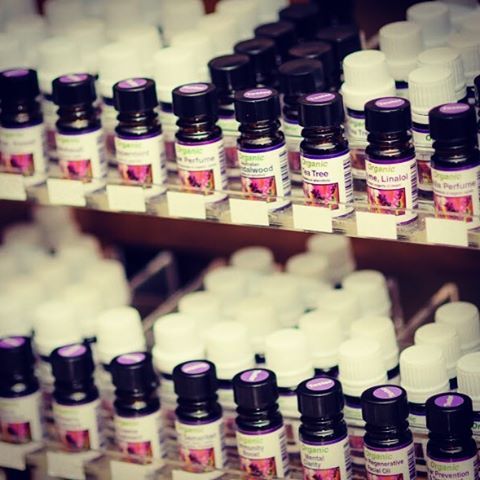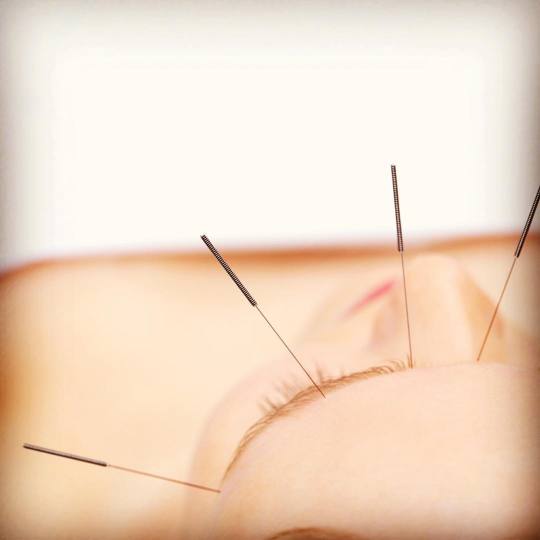NE Wellness believes that healthcare should be affordable and accessible for all. We utilize a sliding fee scale for our services and ask that you only pay what you can afford.
Don't wanna be here? Send us removal request.
Text
What are Chakras ?
Thursday Afternoon Chakra Readings Now Available
Practitioner: Clare Gardner Nieto, Western Herbalist & Flower Essence Therapist
Price: $5 for 15-minute reading*
Offer: 20% off remedies during an Initial Consultation with Clare if you schedule it the day of your Chakra Reading
Clare Gardner Nieto, NE Wellness’ resident Western Herbalist & Flower Essence Specialist, is now offering 15-minute Chakra Readings on Thursday afternoons from 3:30-7pm. During your reading, Clare will place her fingers on your wrist pulse and use a method of focused pulse testing to listen to your energetic centers. She will walk you through the basic roles and connections of the chakras and share with you the feeling/sensation and energy level of your overall body and chakra centers. At the end of the reading, Clare will email you a synopsis of the reading and you may choose to schedule a session with her to work on your health and energy balance.
What are the Chakras?
Chakras are areas of the body that spin and draw in energy.
Each chakra influences bodily functions near its region of the spine. They interact with the body’s ductless endocrine glands and lymphatic system by feeding in good bio-energies and disposing of unwanted bio-energies. The seven main chakras are linked to the nerve ganglia (plexuses) along the spine and influence nervous functions as well. The Chakras are responsible for keeping the spiritual, mental, emotional and physical health of the body in balance.
What can a Chakra Reading do for me?
It can help tell you which chakras are blocked and which require balancing.
It’s possible to analyze the flow of the energies between chakras and the barriers that interrupt the flow. With a chakra reading, you can learn your primary blockages and problems that hold you back in your psychic development and your daily life. A chakra reading can help you to become more aware of the weaknesses in your mind and body, which can help to speed up the process of inner growth.
How can I use this information?
Talk with the people in your alternative healthcare network.
Talk to your acupuncturist, yoga instructor, herbalist or massage therapist about the results. You can also schedule an appointment to discuss flower essences and herbs with Clare if you’re interested in balancing out your chakras and/or approaching other health concerns.
Flower Essences and Herbs can help to bring peace to your hectic lifestyle, rebalance health concerns, and help you to break negative patterns in your life that are holding you back. Ask to see Clare before or after your infrared sauna, community acupuncture or other appointment on Thursdays to find out more. You may also schedule an appointment online through Mind Body or give our front desk a call.
0 notes
Text
Aromatherapy Mini-Workshop
Sunday, April 9, 2017 from 2-3pm in the sauna reception area
Aromatherapy mini-workshop
Feeling stressed out? Join Jen Shepherd (our new Certified Clinical Aromatherapist and Licensed Independent Clinical Social Worker) for a relaxing “time out”. You will learn about essential oils that can support your emotional health and wellness. Sample various aromas that will help you to feel refreshed, relaxed, and uplifted!
Jen will also be demonstrating how to you can make your own personal aroma inhaler at home and use to enhance peace and relieve stress.
All Veriditas essential oils and products on sale 20% off. Free inhaler with purchase.
1 note
·
View note
Photo

NECA welcomes Jen Shepherd Clinical Aromatherapist to the team! #essentialoils #veriditasbypranarom (at NE Community Acupuncture & Wellness Center)
0 notes
Text
Foundations of Nutritional Therapy: Digestion Part 2 - The Mouth
In the first post of this series on digestion, we looked at how stress affects our digestion. We uncovered the importance of being calm and relaxed when we eat so our body can focus its energy on properly breaking down, absorbing, and utilizing the nutrients contained in our food. But obviously there’s a lot more going on in the digestive process. Let’s keep moving south from the brain.
Have you ever seen those dudes competing in hotdog eating contests? I just read an article by Gastroenterology and Endoscopy News (riveting…) saying that they suffer extremely painful cramps, nausea, gas, vomiting, heartburn, and diarrhea after each match. Duh. They aren’t chewing. Not at all.
Chewing is more important than most people think. Mechanically, chewing breaks our food down into smaller pieces for our stomachs to churn. It also gives our saliva time to moisten (sorry to those of you who hate that word) the food so it slides down our esophagus more easily.
The saliva also has a less obvious function that not many people know about. Your saliva contains an enzyme called amylase. Enzymes are little molecules that act as enablers for the various reactions constantly taking place all over our body. The purpose of the salivary amylase is to kickstart the chemical break down of our carbohydrates (veggies, fruits, grains, etc.) into smaller molecules that are easier to absorb into our blood stream.
This kickstarting process doesn’t happen anywhere else in our digestive tract. For us to fully digest and absorb our carbohydrates, we need to chew and properly salivate our food!
What can happen if you don’t chew enough? For starters, you won’t get as many of the important nutrients found in the food that our bodies need to function. The bigger, unchewed pieces of food can cause stomach cramps and nausea. Because your stomach doesn’t have teeth of its own, those big chunks pass into your intestines and can cause leaky gut (an assault on your immune system), more painful cramping, and all sorts of other digestive issues.
These consequences are all easily avoided simply by slowing down, chewing, and enjoying our food. Even when it seems like there’s not enough time and we have to run out the door to our next important appointment, you’ll save yourself a lot of pain later in the day if you chill and chew.
The goal is to make your food lose all texture and almost feel liquid. But to start, try shooting for 30 chews per bite. An easy trick to help you achieve this is to put your fork down after every bite. This will help curb the impulse to mindlessly shovel food into your head.
Go ahead. Try it. Chew each bite 30 times and then leave a thank you comment when your indigestion goes away. And if you see any hotdog eating contestants, send them a link to this post.
0 notes
Photo

"Get ready to take your wellness to the next level with essential oils and #aromatherapy! We are excited to be offering Veriditas by Pranarom as our essential oil line! It is a reputable #essential #oil company that is based here in the Twin Cities. They work directly with the farms and distilleries, and promote #sustainable and #ethical harvesting. They also have dual #organic certification. We are carrying single oils, as well as some of the wellness blends. We even carry the roll-on deodorants, perfect for after using the #sauna at Sweat NE ! Our next Free Day is April 2nd. Hang around afterwards for the free Aromatherapy class taught by Jen Shepherd, Clinical Aromatherapist. Jen is a new addition to the team, and will be opening her schedule to clients later this spring. More to come about that!" -- Jen Shepherd, MSW, LICSW (at NE Community Acupuncture & Wellness Center)
0 notes
Text
How I Managed My Chronic Pain With Nutritional Therapy pt. 2
In last week's post, we looked at how addressing the foundational aspect of gut health influences some of the most common underlying causes of chronic pain. In this post, we'll dive deeper into some of the dietary aspects to see how we can lessen our pain symptoms even further. I realize the last few posts have been a bit longer; my apologies, there's a lot to cover. I promise I've got some shorter, more accessible posts coming up.
Alright. Let's dig in.
Dietary Aspects
Most people know how certain foods can make them feel less than awesome. It's common knowledge that eating foods that you're allergic or sensitive to can cause GI symptoms like bloating, gas, and pain. And as we discussed earlier, there are more intense effects on our bodies that we don't always readily attribute to the foods we eat. When it comes to chronic pain it's amazing how much can be resolved simply by avoiding those common allergies (wheat/gluten-containing products, dairy, grains). But aside from allergies and intolerances, there are a host of other foods that can bring about painful symptoms all over our bodies. Let's take a look at some of them.
Refined/Processed Foods:
This probably isn't terribly surprising to many of you. Most processed foods are high in sugar, additives (aspartame, MSG), and other non-foods and are generally seen as toxins inside the body. These toxins, and the body's attempts to metabolize, utilize, and clear the toxins, can cause serious inflammation all over the body. Foods high in sugar also result in high insulin levels which can exacerbate inflammation. This includes grains, which are metabolized very similarly to sugar, and naturally occurring sugars in high glycemic fruits and starchy veggies.
As we discussed in the magnesium deficiency post, excess sugar intake severely depletes your magnesium stores. In addition to being necessary for the relaxation of muscles, magnesium plays a crucial role in regulating how our brains perceive pain. With too little magnesium, certain neurotransmitters run amok in the brain causing neurons to be more sensitive to pain.
Lastly, processed and refined foods are usually much higher in omega-6 fatty acids than omega-3 fatty acids. This is important because these essential fatty acids (EFAs) go on to become hormones that regulate the body's ability to inflame and anti-inflame. When these two EFAs are in balance with each other (ideally a 1:1 ratio), the body's pro-inflammatory/anti-inflammatory processes are also balanced. When the scales are tipped in favor of more omega-6 fats, the pro-inflammatory processes take over. To combat this, we can always supplement with the anti-inflammatory omega-3s, but that can be like starting a race several minutes behind your rival. Sometimes we need to level the playing field by limiting the amount of omega-6s we take in.
If I were to recommend one dietary change to all of my clients, avoiding processed and refined foods would be it. This is a great starting point for tackling chronic pain as well as a number of other health issues. By removing these toxins and giving our bodies the materials it needs to repair itself and reduce inflammation, we'll surely see huge improvements in the overall health of our bodies.
Nightshades:
Where sugar and non-foods seem obvious, the nightshade family might be a little more obscure - especially if you've never heard of nightshades in the first place. The complete list of foods in the nightshade family is extensive but the most common are tomatoes, potatoes (excluding sweet potatoes and yams), eggplant, and all types of peppers.
Nightshades have sort of a funny history. Initially they were thought to be poisonous and were only grown for decorative purposes. If eaten, these fruits and vegetables were thought to shorten one's lifespan and even cause insanity (eggplants used to carry the nickname "mad apple"). Those might seem like outlandish claims, but nightshades have now been linked to inflammation, joint pain, muscle pain, arthritis, morning stiffness, sensitivity to changes in the weather, insomnia, and even gallbladder issues.
But aren't all those foods supposed to be good for you? The ambiguous answer is that they can be very health-giving for some and problematic for others. Just like how some people have increased sensitivities to properties in certain foods, some people can be more sensitive than others to the chemical components (called alkaloids) found in nightshades. Alkaloids are nature's insecticide. They protect the plant from being eaten. Two examples of alkaloids found in night shades are calcitriol and solanine. Calcitriol can lead to the calcification (hardening) of smooth muscle tissues, ligaments, tendons, and cartilage. Eating foods rich in vitamin K2 can help fight calcification. K2-rich foods include butter from grass-fed cows, egg yolks from grass-fed chickens, liver, and fermented foods. Repeated exposure to solanine in nightshades can lead to prolonged muscle contraction resulting in stiff, painful muscles, especially in the morning.
It's been said that if the positive results of your pain treatment (chiropractic, acupuncture, ultrasound, etc.) only last 1-2 days, you may be sensitive to nightshades and would greatly benefit from eliminating them from your diet. And heck, the nicotine plant is even part of the nightshade family. So there's another way smoking might be causing problems in your bod.
Legumes/Nuts/Seeds:
This one is a little trickier. For me, I definitely had a sensitivity to legumes (I love hummus, alright?) so it was in my best interest to eliminate them from my diet. Like nightshades, however, some people can handle them. However, it's important that, if you're going to eat these, they are prepared in such a way that doesn't add stress or damage to your already aching body.
Nuts, seeds, and legumes (and we can include grains in this section too...), much like the rest of the plant world, were not actually designed to be eaten. Their main purpose as seeds is to spread and populate large areas. To do this, seeds must be able to protect themselves. They do this by making themselves difficult to digest with the help antinutrients like phytates, lectins, and trypsin inhibitors.
Phytates bind to minerals in the gut and prevent their absorption. Nuts are a great source of minerals like magnesium and calcium, but phytates don't allow you to absorb and use them - they just flow right through you. Lectins are combinations of sugars and proteins that increase inflammation in the body. And finally, trypsin inhibitors block the absorption of proteins that your body can use to repair itself.
This sounds hopeless but there is a way to enjoy these foods again! During the germination process, these foods release a special enzyme that deactivates most of these antinutrients. The process of soaking and/or sprouting your legumes, nuts, seeds (and grains) tricks them into thinking they've been planted and they start the germinating. The soaking process is wicked easy (sprouting is a little more complicated). All you have to do is soak the legumes/nuts/seeds in warm water with some sea salt for 12-24 hours. Once they've soaked, rinse them with cool water and dry them in the oven or dehydrator at a very low temperature. This last step is necessary to prevent mold.
Which brings me to my next point. Legumes, nuts, and seeds are especially susceptible to a certain type of mold poison called aflatoxin. It can lead to all sorts of unpleasant symptoms including pain and arthritis. If you're going to eat these foods, do make sure they're as fresh as possible and store them in a cool, dry, airtight container.
Legumes, nuts, and seeds can absolutely be healthful foods. They are high in proteins, carbs, vitamins, minerals, and antioxidants. I strongly urge you to eat them in moderation, however, as most types can be higher in the omega-6 fats we discussed earlier. Also, legumes are very high in carbohydrates which demands more insulin. High insulin levels, as we've also discussed, triggers more inflammation.
I know that seems like a lot of food to suddenly cut out of your diet. It definitely feels that way sometimes. But it's important to note that your body, and therefore your pain, is unique. It's possible that nightshades, legumes, and nuts don't have any adverse effects in your body at all. It's important to try an elimination-style diet where you remove the common stressors and gradually reintroduce them one by one, keeping tabs on your symptoms along the way. This is a cheap and easy way to find which foods you should avoid to feel your best.
So there you have it. I know that's a lot of information. But it's important to know what could potentially be causing your pain in order to take the steps necessary to diminish it. And like I said, these are the methods that worked for me. Every body and everybody's pain is different. Schedule a free 10-minute phone/in-person consultation with me today to see how we can tailor a plan specifically for you and your pain. We here at NECA know that healing is best accomplished through multiple avenues. So during the month of February, if you schedule an appointment with me, you'll receive a token redeemable for one FREE acupuncture treatment or one FREE sauna session. Is there a better way to tackle your pain!?
_____________________________________________________
*** The information found on this website should not be construed as medical advice or treatment of medical conditions. Only your healthcare professional can provide you with medical advice. Consult your healthcare professional regarding all matters of your health and before making dietary changes.
0 notes
Text
5 Ways eating whole foods can change your life !
5 Ways eating whole foods can change your life - by Andrea Nordling, NTP & Amie Tollefsrud, NTP
When you think of the term “Paleo”, what comes to mind?
A bunch of ripped, grunting dudes in a Crossfit gym talking about protein and PRs while guzzling raw eggs?
Ok good, so we’re not alone. When we talk "Paleo" here, we are using the sexy term for "nutrient-dense whole foods."
Despite what popular media may have you thinking, eating Paleo is more than just cutting carbs in order to achieve quick weight loss - in fact, this way of eating is actually used as a therapeutic approach to a number of common health concerns. We are here to tell you how we have been able to help our clients turn eating real food into a manageable (...and dare we say...fun?!) way to reach lifelong health.
1. Weight gain
Did you know that weight gain is actually a symptom of a greater issue, rather than just a problem to be addressed in and of itself? Often times, our weight will fluctuate based on what our hormones are doing (hormones run the show.) For example, sluggish liver function and estrogen levels that are too high in relation to progesterone (due to certain foods, alcohol consumption, or environmental toxins) actually encourage amounts of fat storage, particularly around the butt and thighs. Weight gain can also be indicative of the body's impaired ability to detoxify. When all avenues of detoxification are not working to expel toxins properly (the digestive tract, skin, etc) these toxins must be stored in fat cells, causing weight gain. Luckily, eating a Paleo diet has not only been proven as an effective method of balancing hormones, it also provides the adequate nutrients such as choline, antioxidants, and amino acids for proper liver detoxification.
2. Fatigue
Think of a “healthy” Standard American Diet (SAD): Whole grain cereal for breakfast, sandwich for lunch, pasta for dinner. You eat a diet similar to this, day in and day out, and wonder why you can’t seem to function in the morning until a verrry large coffee hits your lips. So what’s going on? Every time we consume a meal high in refined carbohydrates, blood sugar (glucose) levels increase rapidly (think sugar rush). Then the pancreas responds by releasing insulin to bring blood sugar levels back into balance. Without energy-sustaining nutrients like fat and protein, this level of balance does not last long, and soon enough, the liver becomes involved by releasing glucagon in attempts to bring blood sugar back up. Additionally, our adrenal glands often have to step in to combat these insulin surges with an output of cortisol. (Have you heard of a cortisol belly? We bet you have!)
Ok enough science - but simply put: A SAD diet puts you on a blood sugar rollercoaster that quickly throws adrenal hormones and cortisol rhythm out of balance...and it ain't pretty. This looks like hormonal acne, infertility and thyroid disfunction, but most commonly, the result is crippling fatigue, aka all-I-wanna-do-is-watch-Netflix.
Luckily, eating a Paleo-style diet full of healthy fats, proteins, and nutrient dense carbohydrates will take you off of this blood sugar rollercoaster for good, allowing your adrenals to heal, your hormonal balance to become regulated, and best of all - your energy to return!
3. Poop problems
If you’ve ever gone to doctor and been diagnosed with IBS, you know the frustration of having a weird combination of constipation, bloating, and diarrhea. Unfortunately, there is no “cure” for IBS, besides figuring out which foods are triggering unwanted digestive reactions. In both of our Nutritional Therapy practices, one of the the first digestive protocols is a simple elimination diet that gets rid of gluten, dairy, soy, alcohol, and added sugars. If this sounds intimidating - don’t worry, we’ve got you covered! These foods don't always need to be avoided long-term, and we teach a method of re-introduction that will tell you exactly which of those foods causes an inflammatory reaction in your body right now. Yes, we said right now, because your body is amazing at healing itself, and nothing is permanent.
4. Acne
Our skin cells regenerate every 27 days, which means that the foods we eat become the raw material necessary for creating beautiful skin. When we continue to consume inflammatory foods like refined oils, or processed food and added sugars, the result is lackluster skin with an excess or absence of proper levels of skin sebum, often leading to painful acne. Incorporating a wide variety of Paleo foods is the best way to get the appropriate amount of skin healing nutrients like zinc, vitamin A, Vitamin K2, selenium, collagen and essential fatty acids. Your skin can tell you a lot about what is going on in internally, so listen to it!
5. Anxiety
One of best kept-secrets of the Paleo diet is that it actually can be used as a therapeutic approach to heal anxiety and depression.
How is that possible?! Neurotransmitters such as GABA, Serotonin, Norepinephrine, Endorphin and Dopamine are directly responsible for our personal brain chemistry - meaning lack or imbalance can lead to things like anger, depression, hyperactivity, memory loss, drug/alcohol cravings and bad moods.
The levels of these neurotransmitters are directly affected by our nutritional choices; including intake of amino acids, essential fatty acids, vitamins and minerals. This is where intake and absorption of high quality protein is essential. Sources like pasture raised eggs, grass-fed beef and wild caught fish are all great options.
If our diet is lacking in these things, OR we are not digesting the nutrients in our food properly, we are unable to produce the neurotransmitters and amino acids necessary for optimal mental health. Optimizing digestion is one of the most important steps to focus on when beginning a Paleo diet - and is the key to healthy digestion, blood sugar balance, skin health, weight maintenance and more.
Each of these symptoms could mean the difference between jumping out of bed in the morning with excitement and wanting to hide at home all day, feeling like you've been hit by a truck.
If any of the 5 scenarios above sound familiar, then you're just like us (and our one-on-one clients.) Struggling with our own uncertainty about what to actually eat is what led us both to pursue further education in nutrition, and ultimately to become the nourished Nutritional Therapy Practitioners that we are today.
We have implemented a systematic approach that anyone can follow, no matter what your struggles. (We turned this entire process into a step-by-step 6-week online course, check it out here!)
Our 6-week course helps you determine YOUR personalized Paleo diet + takes you through designated modules for fixing your *shitty* digestion, blood sugar regulation and hormones FIRST (with weight-loss as a bonus side effect.)
CLICK HERE to learn more !
0 notes
Text
Cholesterol & Statin Drugs
Cholesterol and Statin Drugs
I have to confess I'm a little nervous to submit this post. I fully realize that a lot of what I'm presenting here will go against everything we've been told as a society for decades. But for that reason I feel this information is worth sharing, no matter how controversial the ideas may be. Today's topic: cholesterol.
In today's low-fat world, we're told daily that dietary fat and cholesterol are making us fat and giving us high blood pressure, leading to strokes and heart attacks. Those allegations couldn't be further from the truth, but if you go to the doctor and find you have "high cholesterol" (which isn't difficult to achieve - the ideal numbers get lower and lower by the year in order to sell more pharmaceutical drugs), you'll likely be prescribed some form of statin medication - the most common type of cholesterol lowering drug.
But what is cholesterol? Well, the truth is, cholesterol is vital and necessary to the health of our bodies. That's what it is.
Ok. Enough with the snark. What is cholesterol, really? Cholesterol is an integral part of the membrane of EVERY cell in your body. Along with saturated fat, another bad word in today's fat-phobic society, it keeps every cell membrane strong and stable. Without it, toxins and nutrients would pass in and out of the cells freely, completely messing with the metabolic health of each cell.
About 25% of the body's cholesterol is found in the brain as a component of the fatty myelin coating of every nerve. Cholesterol is a major ingredient of all steroid hormones (sex hormones secreted by the adrenals, ovaries, and testes). It plays a huge role in immunity by clearing infections. It's an antioxidant! It's also a major player in the body's healing process. The list of cholesterol's functions could keep going but I want to take a moment to look at that last one a little deeper.
We put our bodies through a lot. Nicks, cuts, scrapes, inside AND outside, are inevitable. When there's an injury, who's the first responder? You guessed it, cholesterol. I already mentioned its ability to fight off infection, but it also lays the initial patchwork of the healing process. This is important when we start talking about blood cholesterol levels. What elevated cholesterol tells me is that there's some sort of injury that isn't given time to heal properly before it is repeatedly re-injured. When this process keeps looping, that's when the cholesterol (along with platelets and other healing agents) builds up and causes problems. But to blame cardiovascular problems on cholesterol is like blaming traffic on the paramedics responding to a crash on the highway.
Unfortunately, a large number of medical professionals only focus on the build-up, they don't try and find the root causes (namely systemic inflammation from insulin resistance and the overconsumption of processed foods...but I digress). So let's prescribe a drug to lower the amount of cholesterol in the blood and our problem is solved! Right? Not quite.
The list of negative effects of statins on the body is a little overwhelming to say the least. It includes:
· Muscle damage, nerve damage, liver damage...let's just call it cell damage leading to a failing body
· Anemia
· Cardiovascular damage - because we've eliminated the main healing ingredient
· Vitamin and mineral deficiencies - In particular CoQ10, Selenium, Vitamin D
· Memory loss, confusion
· Diabetes - by affecting your insulin levels
· Endocrine (hormonal) imbalances
· Birth defects
· Increased risk of cancer - remember what I said about cholesterol being an antioxidant?
Additionally, low serum cholesterol levels are linked to depression. Low brain cholesterol levels are linked to depression, bipolar disorder, and schizophrenia. On top of all of that, it's been proven that statins don't actually decrease your risk of heart attack all that much. The actual findings from the initial studies were skewed to show a 36% drop in risk. However, when looking further into the data, we see that the "relative risk" drops from 3% to 2%. That ominous list of potential dangers doesn't seem worth the 1% drop in risk to me.
There are a ton of natural ways to reduce cholesterol without statins and their harmful side effects. Some examples would be red rice yeast and Omega-3 fatty acids. But, like I said before, this doesn't address the underlying reasons we might have high cholesterol in the first place. Every body will have a different set of circumstances but we would start by removing refined and processed foods - the true cause of weight gain and cardiovascular issues. Implementing a real, whole food diet is the first step. The next goal would be to address digestion, blood sugar balance, and any potential toxins/stressors in the body. After working on these key ideas we can expect to see a drop in systemic inflammation and cholesterol levels will normalize.
Every body is different, everyone has different nutritional needs, so the protocols mentioned above would need to be custom tailored to fit your needs. How do we know what those needs are? Well, I know a guy who can help... Schedule a free 10-minute phone/in-person consultation with me and let's get started giving your body what it wants to function optimally!
*** The information found on this website should not be construed as medical advice or treatment of medical conditions. Only your healthcare professional can provide you with medical advice. Consult your healthcare professional regarding all matters of your health and before making dietary changes.
--
Alex Alexander Young - Drums Alexander Young, NTP
NE Community Acupuncture + Wellness
1 note
·
View note
Photo

So how does #Acupuncture work ? http://articles.mercola.com/sites/articles/archive/2016/06/23/how-does-acupuncture-work.aspx www.necommunityacupuncture.com 612-399-NECA (at NE Community Acupuncture & Wellness Center)
0 notes
Text
Winter Food Therapy Class + Cupping Demo
Join licensed acupuncturist Leah Fifield for a fun and informative wellness workshop on how to select, prepare and enjoy healthy food for the winter season according to Chinese therapeutic principles. Taste a seasonal dish and win some black beans!
Leah will also be demonstrating how Cupping works and discussing the many benefits of this ancient healing therapy.
612-399-NECA
1224 2nd ST NE Suite 201 Mpls MN 55413
0 notes
Text
Standing Rock Fundraiser + Free Acupuncture Day
Free Acupuncture for all patients !
Please consider making a donation of any kind to support those at Standing Rock.
Here is a link to their top supply needs. Click Here
NECA will be sending a representative out to Standing Rock to deliver your donations, or mailing them directly to the camps in need of supplies.
Please email questions to : [email protected]
1 note
·
View note
Text
Grand Opening of Sweat NE!
Grand Opening for "Sweat NE," a Far-Infrared Sauna Studio, featuring 3 private sauna rooms ! Also a new art exhibit from Marjorie Schalles called "Earth Art." The images you see are paintings that were inspired by photographs of the earth taken from statellites. Sources include United States Geological Survey (USGS), National Academy of Space Administration (NASA) and various books and magazines from public libraries. Interior Design from Danish Teak Classics
1 note
·
View note
Photo

Orchids Blooming!! (at NE Community Acupuncture & Wellness Center)
0 notes
Photo

New Art Today ! (at NE Community Acupuncture & Wellness Center)
0 notes
Photo

Lovin the New Wellness Menus ! #neca #nempls #acupuncture (at NE Community Acupuncture & Wellness Center)
0 notes

